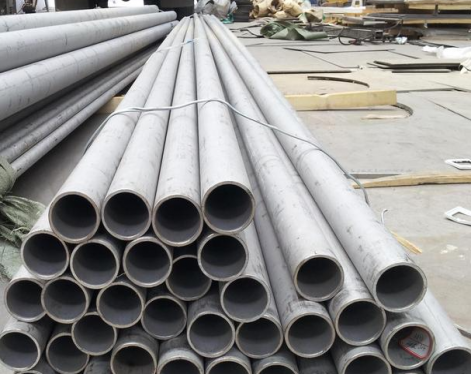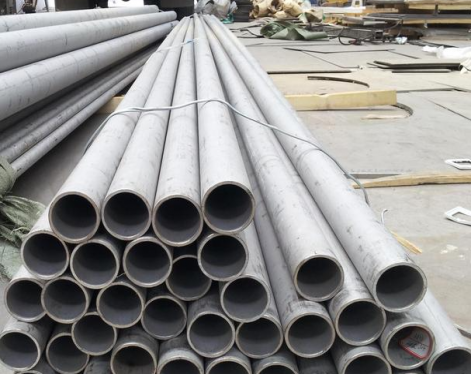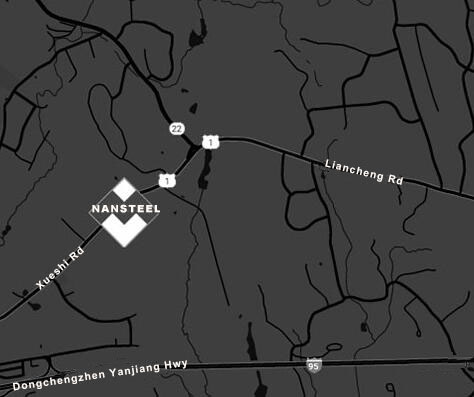The national standard thickness of stainless steel pipes should first be determined by the nominal diameter or outer diameter of the pipe. The national standard for thin-walled stainless steel pipes is divided into the | series and the l series. For pipes with the same nominal diameter, the outer diameter of the pipe will vary slightly.
In stainless steel pipes, "Ф" and "DN" are generally used to indicate diameter. The difference is:
"Ф" indicates the diameter of a standard circle, or the outer diameter of the pipe multiplied by the wall thickness. For example, Ф25×3 indicates a pipe with an outer diameter of 25mm and a wall thickness of 3mm.
"DN" indicates the nominal diameter of pipes and fittings such as valves, usually close to the inner diameter. It is a standard term established for engineering installation and matching.
Ф represents the outer diameter, while DN refers to the inner diameter. Their conversion formula is: DN = Ф - wall thickness * 2.
In fact, in the engineering field, there is no completely direct correlation between nominal and outer diameters of pipes. The conversion between outer and nominal diameters relies mainly on experience. They are roughly similar, but not exactly equal; rounding is sufficient. For example, φ108*5 has an outer diameter of 108, and its nominal diameter is 100; another example is φ32*3, with an outer diameter of 32, and its nominal diameter should be 25. And so on, the correspondence between outer and nominal diameters can be obtained.
Formula for Calculating the Wall Thickness of Seamless Steel Pipes in Pressure Pipelines
The theoretical wall thickness of seamless steel pipes is only the minimum pipe wall thickness required to withstand internal pressure, determined according to strength conditions. However, the formula for calculating the wall thickness of seamless steel pipes used in engineering must also consider factors that weaken the strength.
Basic Concepts
1. Outer Diameter (OD): The outer diameter refers to the outer diameter of the pipe's cross-section, usually expressed in millimeters (mm). It is the most intuitive dimension of the pipe. In engineering, the outer diameter directly affects the matching and installation of pipe fittings.
2. Wall Thickness (WT): The wall thickness is the thickness of the pipe wall, also expressed in millimeters. It determines the pipe's pressure resistance, strength, and corrosion resistance.
3. Nominal Diameter (DN): DN is the standard designation for pipe specifications, not the actual measured dimension. The same DN may correspond to different combinations of outer diameter and wall thickness; therefore, specific specification tables must be consulted during procurement and design.
Summary: Outer diameter and wall thickness determine pipe performance; DN is merely a specification identifier for ease of design and calculation.
Relationship between Outer Diameter and Wall Thickness in National Standards
In GB standards, the outer diameter is the actual measured value of the pipe, while the nominal diameter is merely an engineering designation. Most manufacturers provide a **"DN-OD-WT conversion table"** for easy engineering design and procurement selection.

Commonly Used DNs and Actual OD References
For ease of engineering design and procurement, the following lists some common DNs and their corresponding outer diameter reference values (please refer to the technical parameters provided by the manufacturer for specific details):
When selecting wall thickness, the following should be noted:
Thicker wall thickness is not always better; it needs to be considered in conjunction with working pressure, media properties, temperature, and welding process.
Increasing wall thickness can improve pressure resistance and corrosion resistance, but it also increases weight and cost; therefore, a trade-off must be struck during selection.
A common representation is "OD×WT", for example:
DN50, OD603mm, WT20mm. Here, 603mm is the actual outer diameter corresponding to DN50, and 20mm is the wall thickness.
In stainless steel pipes, "Ф" and "DN" are generally used to indicate diameter. The difference is:
"Ф" indicates the diameter of a standard circle, or the outer diameter of the pipe multiplied by the wall thickness. For example, Ф25×3 indicates a pipe with an outer diameter of 25mm and a wall thickness of 3mm.
"DN" indicates the nominal diameter of pipes and fittings such as valves, usually close to the inner diameter. It is a standard term established for engineering installation and matching.
Ф represents the outer diameter, while DN refers to the inner diameter. Their conversion formula is: DN = Ф - wall thickness * 2.
In fact, in the engineering field, there is no completely direct correlation between nominal and outer diameters of pipes. The conversion between outer and nominal diameters relies mainly on experience. They are roughly similar, but not exactly equal; rounding is sufficient. For example, φ108*5 has an outer diameter of 108, and its nominal diameter is 100; another example is φ32*3, with an outer diameter of 32, and its nominal diameter should be 25. And so on, the correspondence between outer and nominal diameters can be obtained.
Formula for Calculating the Wall Thickness of Seamless Steel Pipes in Pressure Pipelines
The theoretical wall thickness of seamless steel pipes is only the minimum pipe wall thickness required to withstand internal pressure, determined according to strength conditions. However, the formula for calculating the wall thickness of seamless steel pipes used in engineering must also consider factors that weaken the strength.
Basic Concepts
1. Outer Diameter (OD): The outer diameter refers to the outer diameter of the pipe's cross-section, usually expressed in millimeters (mm). It is the most intuitive dimension of the pipe. In engineering, the outer diameter directly affects the matching and installation of pipe fittings.
2. Wall Thickness (WT): The wall thickness is the thickness of the pipe wall, also expressed in millimeters. It determines the pipe's pressure resistance, strength, and corrosion resistance.
3. Nominal Diameter (DN): DN is the standard designation for pipe specifications, not the actual measured dimension. The same DN may correspond to different combinations of outer diameter and wall thickness; therefore, specific specification tables must be consulted during procurement and design.
Summary: Outer diameter and wall thickness determine pipe performance; DN is merely a specification identifier for ease of design and calculation.
Relationship between Outer Diameter and Wall Thickness in National Standards
In GB standards, the outer diameter is the actual measured value of the pipe, while the nominal diameter is merely an engineering designation. Most manufacturers provide a **"DN-OD-WT conversion table"** for easy engineering design and procurement selection.

Commonly Used DNs and Actual OD References
For ease of engineering design and procurement, the following lists some common DNs and their corresponding outer diameter reference values (please refer to the technical parameters provided by the manufacturer for specific details):
| DN | OD |
| DN15 | 213 mm |
| DN20 | 269 mm |
| DN25 | 337 mm |
| DN32 | 424 mm |
| DN40 | 483 mm |
| DN50 | 603 mm |
When selecting wall thickness, the following should be noted:
Thicker wall thickness is not always better; it needs to be considered in conjunction with working pressure, media properties, temperature, and welding process.
Increasing wall thickness can improve pressure resistance and corrosion resistance, but it also increases weight and cost; therefore, a trade-off must be struck during selection.
A common representation is "OD×WT", for example:
DN50, OD603mm, WT20mm. Here, 603mm is the actual outer diameter corresponding to DN50, and 20mm is the wall thickness.









